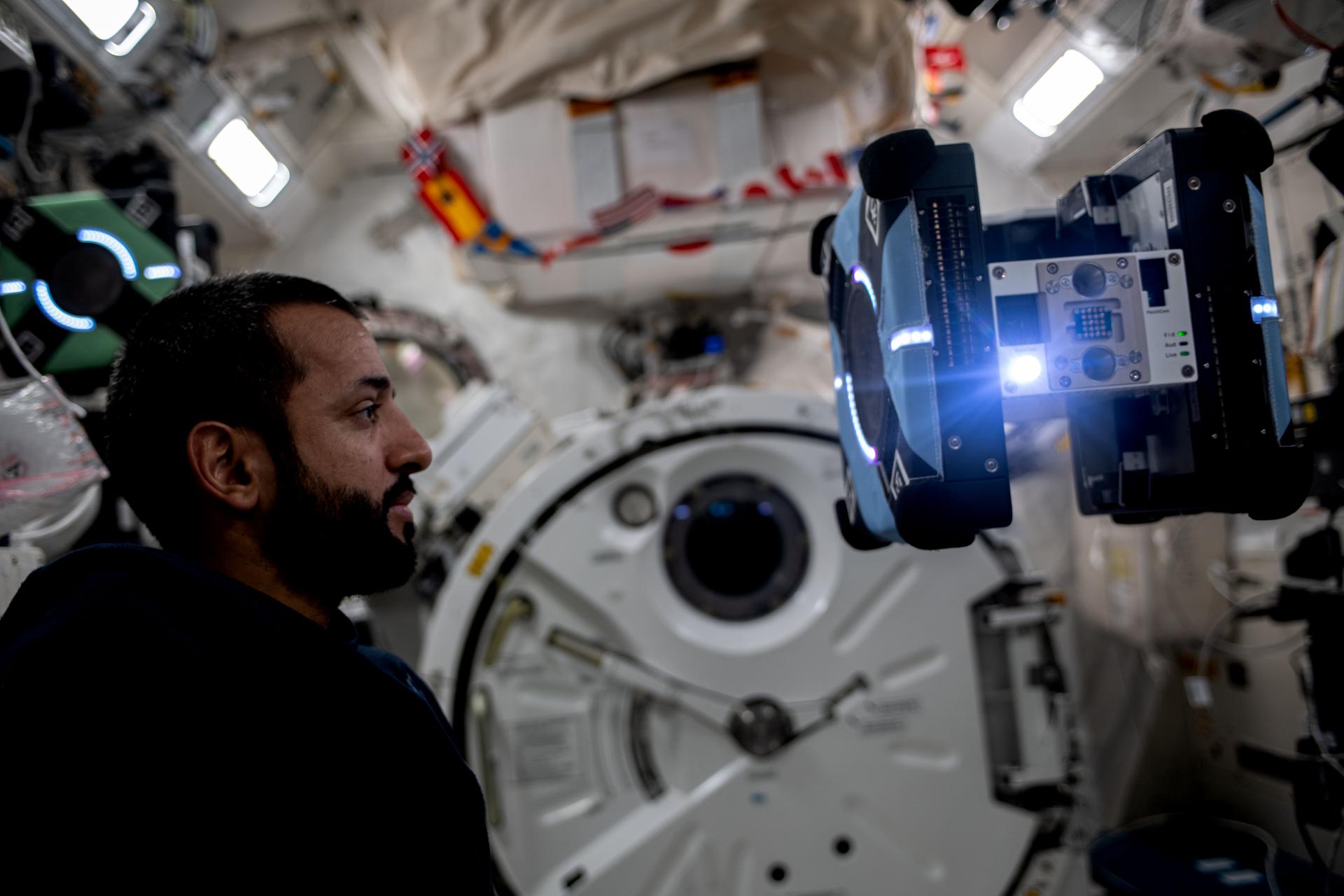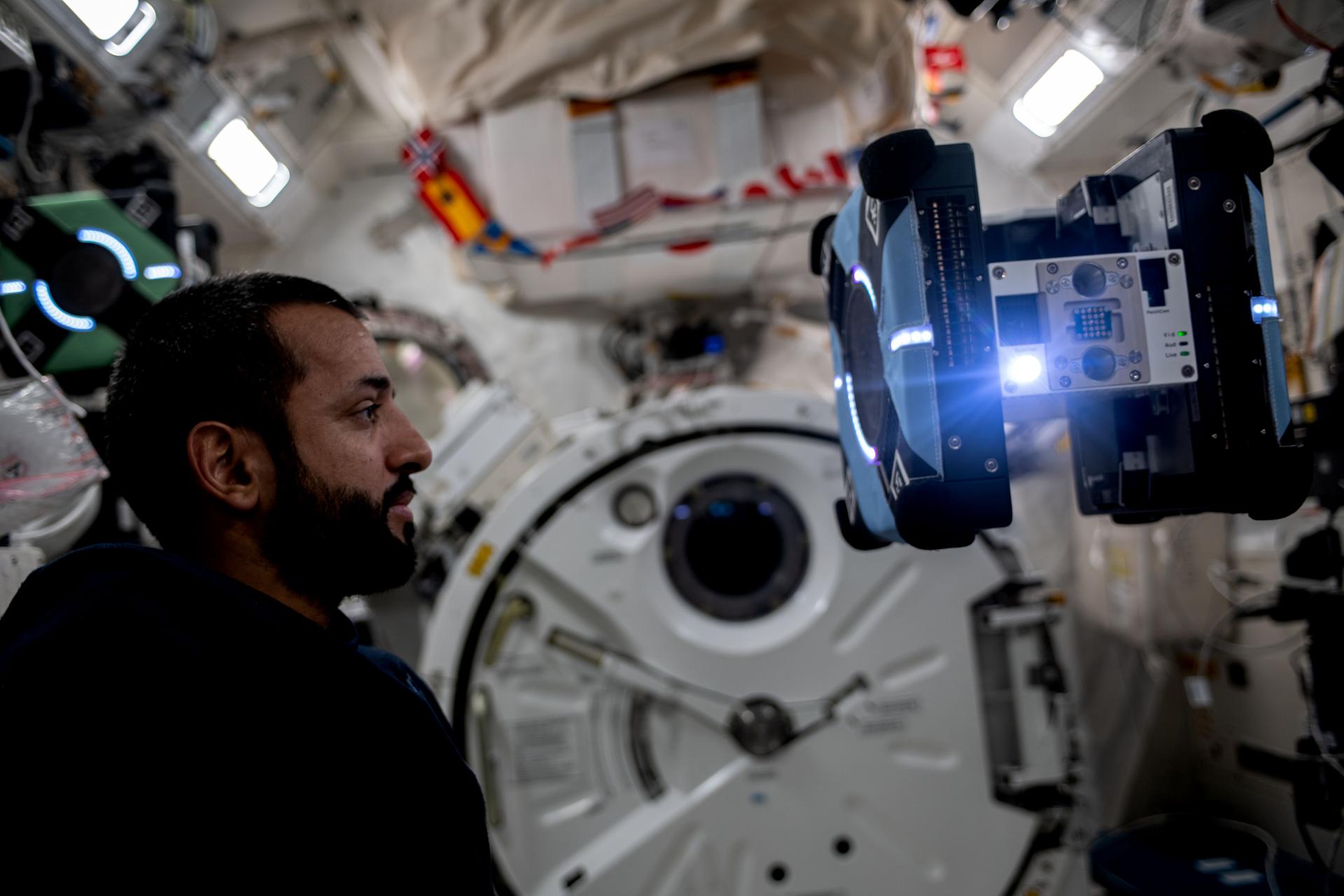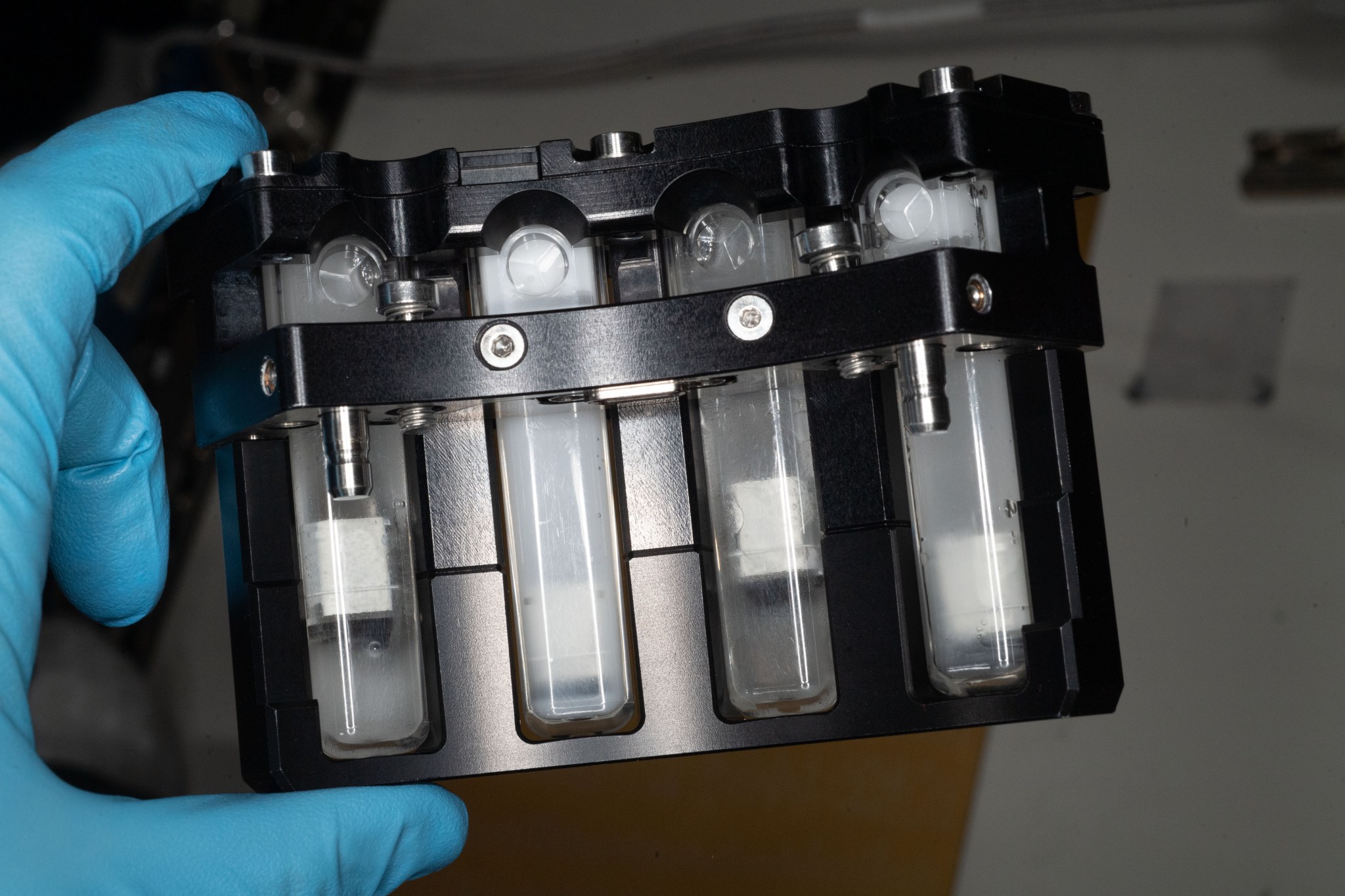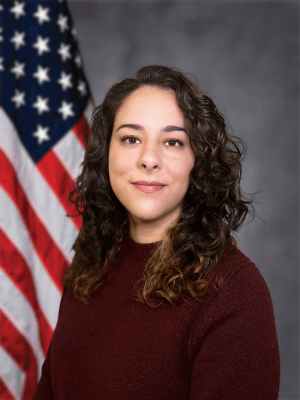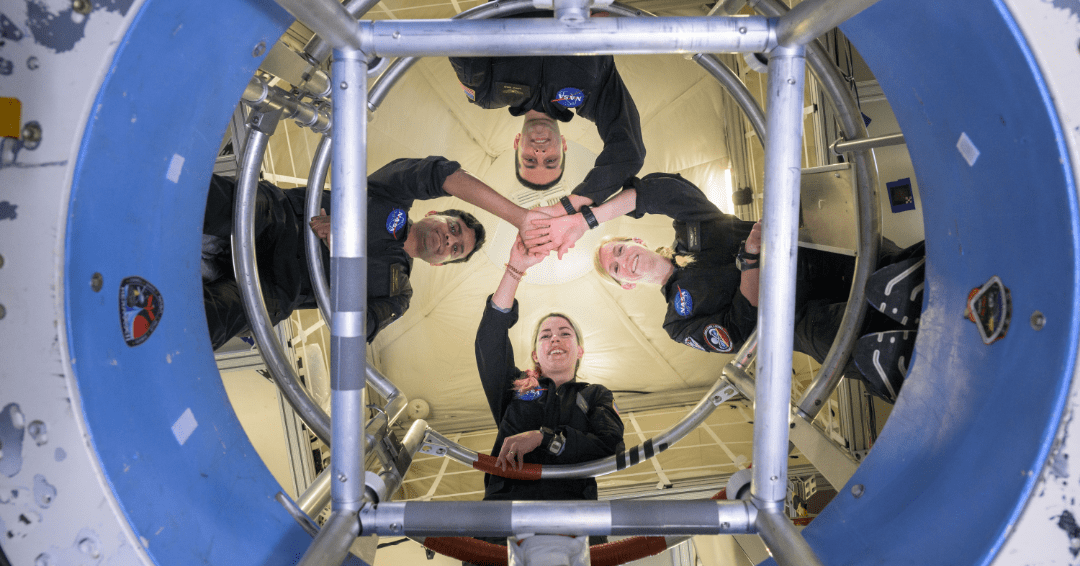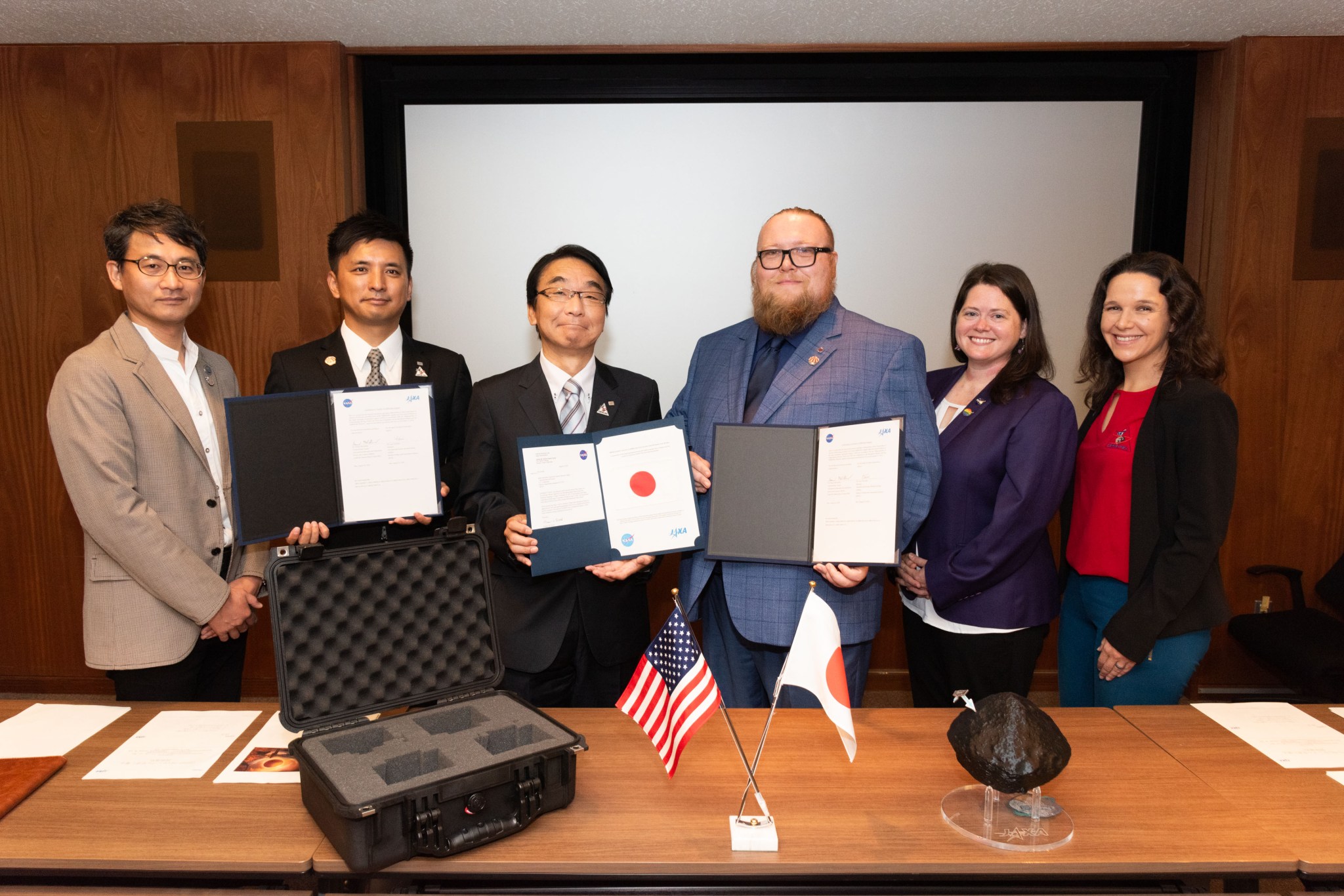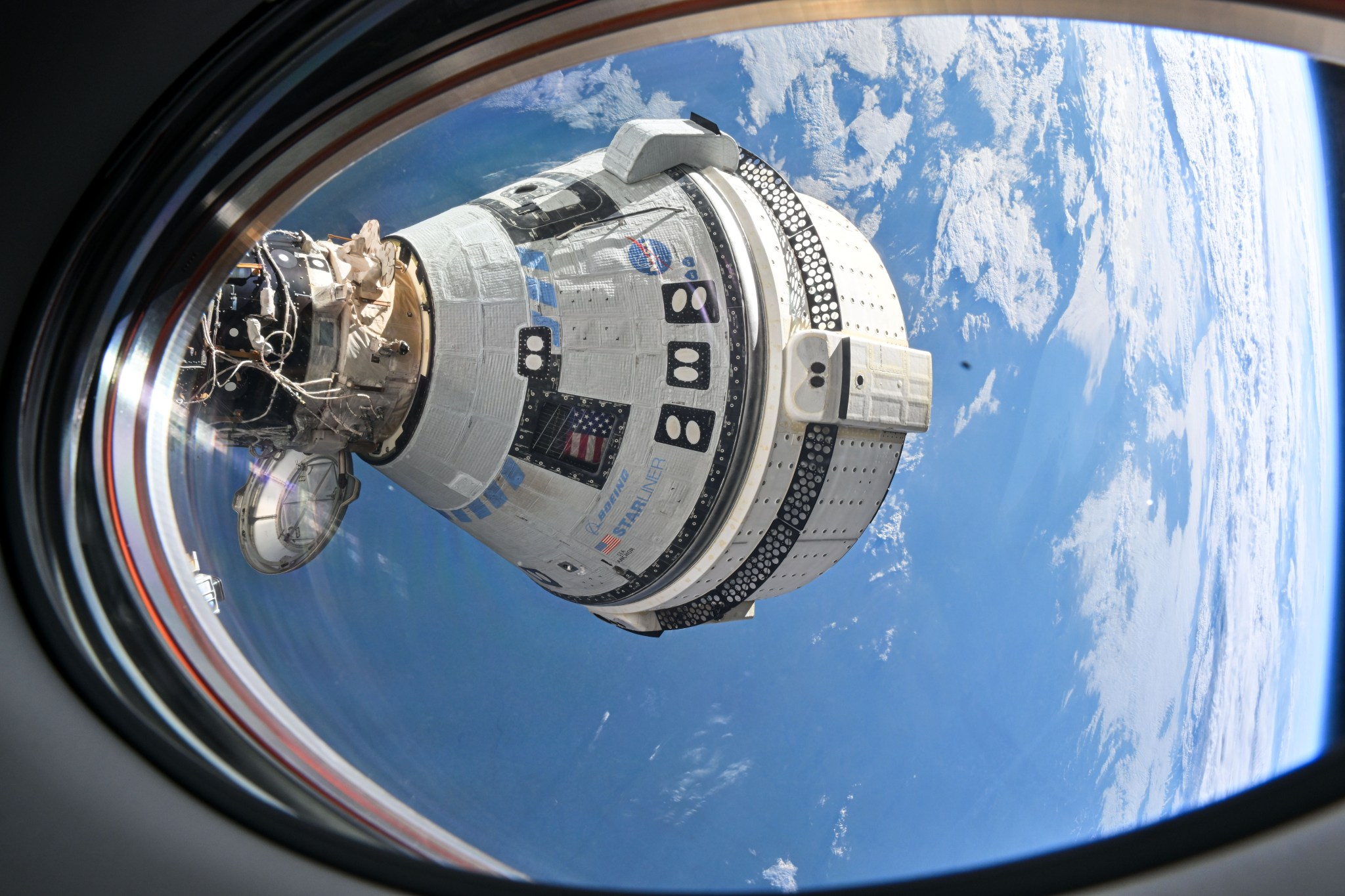7 Min Read NASA Project in Puerto Rico Trains Students in Marine Biology A forested green peninsula of Culebra Island juts into the blue waters of the Caribbean as a rain storm hits in the distance. The teal blue surrounding the island indicates shallow waters, home to the island's famous coral reefs. Credits: NASA Ames/Milan Loiacono Tainaliz Marie Rodríguez Lugo took a deep breath, adjusted her snorkel mask, and plunged into the ocean, fins first. Three weeks earlier, Rodríguez Lugo couldn’t swim. Now the college student was gathering data on…
Read MoreCategory: General
Anything and everything space
DETAIL OPPORTUNITY: NASA OFFICE OF THE GENERAL COUNSEL
2 min read Preparations for Next Moonwalk Simulations Underway (and Underwater) The National Aeronautics and Space Administration (NASA) seeks applicants interested in six to twelve month reimbursable details with the Office of General Counsel (OGC). Applicants must be current Federal Employees. Applicants should receive the approval of their supervisor before applying. Consisting of a Headquarters Office and nine Center-level legal offices, NASA OGC provides advice and legal support on cutting edge issues in support of NASA’s mission of research and exploration on behalf of the United States. Ideal candidates will…
Read MoreNASA Seeks Input for Astrobee Free-flying Space Robots
4 Min Read NASA Seeks Input for Astrobee Free-flying Space Robots iss069e010815 (May 16, 2023) — UAE (United Arab Emirates) astronaut and Expedition 69 Flight Engineer Sultan Alneyadi observes a free-flying Astrobee robotic assistant during the testing of its operations for an upcoming student competition to control the robotic devices. Credits: NASA NASA is seeking input from American companies for the operation and use of a system of free-flying robots aboard the International Space Station as the agency continues to foster scientific, educational, and technological developments in low Earth orbit…
Read MoreStation Science Top News: August 23, 2024
Researchers successfully produced cellulose from bacteria cultured on the International Space Station for four weeks. The bacteria used in the experiment, K. hansenii, is known to produce the highest amount of cellulose and could be considered for large-scale production in microgravity to support the development of materials used in construction, clothing, and the supply of energy. Ice Cubes Experiment Cube #4, #5- Kirara, a temperature-controlled module typically used for protein crystallization, was used here to incubate the target bacteria. Researchers developed a customized methodology that consisted of adjusting gas and…
Read MoreAugust 2024 Transformer of the Month: Selina Salgado
As a Human Resource Business Partner at NASA Headquarters, Selina Salgado describes her job as helping with “all things people” for the enterprise. By facilitating technological solutions to human resources (HR) challenges and needs, she excels at an often-underestimated aspect of Digital Transformation (DT): the interpersonal side. As a champion of community building, knowledge sharing, and digital upskilling, Selina was an easy selection for this month’s Digital Transformer award. Selina started at NASA in 2019 as a Pathways intern and previously worked as a mentoring coordinator for Marshall Space Flight Center…
Read MoreNASA Ames Stars of the Month: August 2024
The NASA Ames Science Directorate recognizes the outstanding contributions of (pictured left to right) Sangsavang Stevie Phothisane, Taryn Kavanagh, Andro Rios, and Hami Ray. Their commitment to the NASA mission represents the talent, camaraderie, and vision needed to explore this world and beyond. Earth Science Star: Sangsavang Stevie Phothisane Sangsavang Stevie Phothisane, a Deputy Project Manager in the Earth Science Project Office (ESPO), demonstrated outstanding leadership as the site manager for both of the field campaigns of the Arctic Radiation-Cloud-Aerosol-Surface Interaction Experiment (ARCSIX) based at Pituffik Space Base, Greenland. He…
Read MoreNASA Funds Studies to Support Crew Performance on Long-Duration Missions
The crew of the Human Exploration Research Analog’s Campaign 7 Mission 1 clasp hands above their simulated space habitat’s elevator shaft. Credit: NASA NASA is funding 11 new studies to better understand how to best support the health and performance of crew members during long-duration spaceflight missions. The awardees will complete the studies on Earth without the need for samples and data from astronauts. Together, the studies will help measure physiological and psychological responses to physical and mental challenges that astronauts may encounter during spaceflight. The projects will address numerous spaceflight risks related…
Read MoreNASA Shares Asteroid Bennu Sample in Exchange with JAXA
As part of an asteroid sample exchange, NASA has transferred to JAXA (Japan Aerospace Exploration Agency) a portion of the asteroid Bennu sample collected by the agency’s OSIRIS-REx mission. The sample was officially handed over by NASA officials during a ceremony on Aug. 22 at JAXA’s Sagamihara, Japan, campus. The signature exchange for the Bennu sample transfer took place on Aug. 22, 2024, at JAXA’s (Japan Aerospace Exploration Agency) Institute of Space and Astronautical Science, Sagamihara Campus. JAXA This asteroid sample transfer follows the November 2021 exchange where JAXA transferred…
Read MorePreguntas frecuentes: Estado del retorno de la prueba de vuelo tripulado Boeing de la NASA
10 min read Preparations for Next Moonwalk Simulations Underway (and Underwater) Esta historia fue actualizada por última vez el 23 de agosto.Read the article in English here. Los astronautas de la NASA Butch Wilmore y Suni Williams llegaron al laboratorio orbital el 6 de junio a bordo de la nave Boeing Starliner tras despegar el 5 de junio desde el Complejo de Lanzamiento Espacial-41 de la Estación Espacial de Cabo Cañaveral, en Florida. Durante el vuelo de Starliner a la estación espacial, los ingenieros observaron que algunos de los propulsores de…
Read More2025 Human Lander Challenge
2 min read Preparations for Next Moonwalk Simulations Underway (and Underwater) In-space propulsion systems utilizing cryogenic liquids as propellants are necessary to achieve NASA’s exploration missions to the Moon, and later to Mars. In current state of the art (SOA) human scale, in-space propulsion vehicles, cryogenic liquids can be stored for several hours. For the planned HLS mission architecture to close, cryogenic liquids must be stored on-orbit on the order of several months. NASA’s 2025 HuLC Competition asks student teams to develop innovative, systems-level solutions to understand, mitigate potential problems,…
Read More
